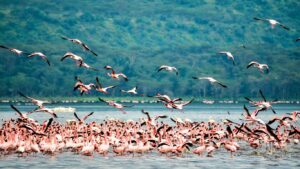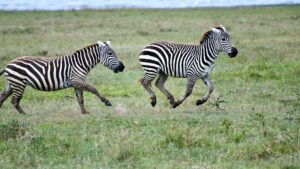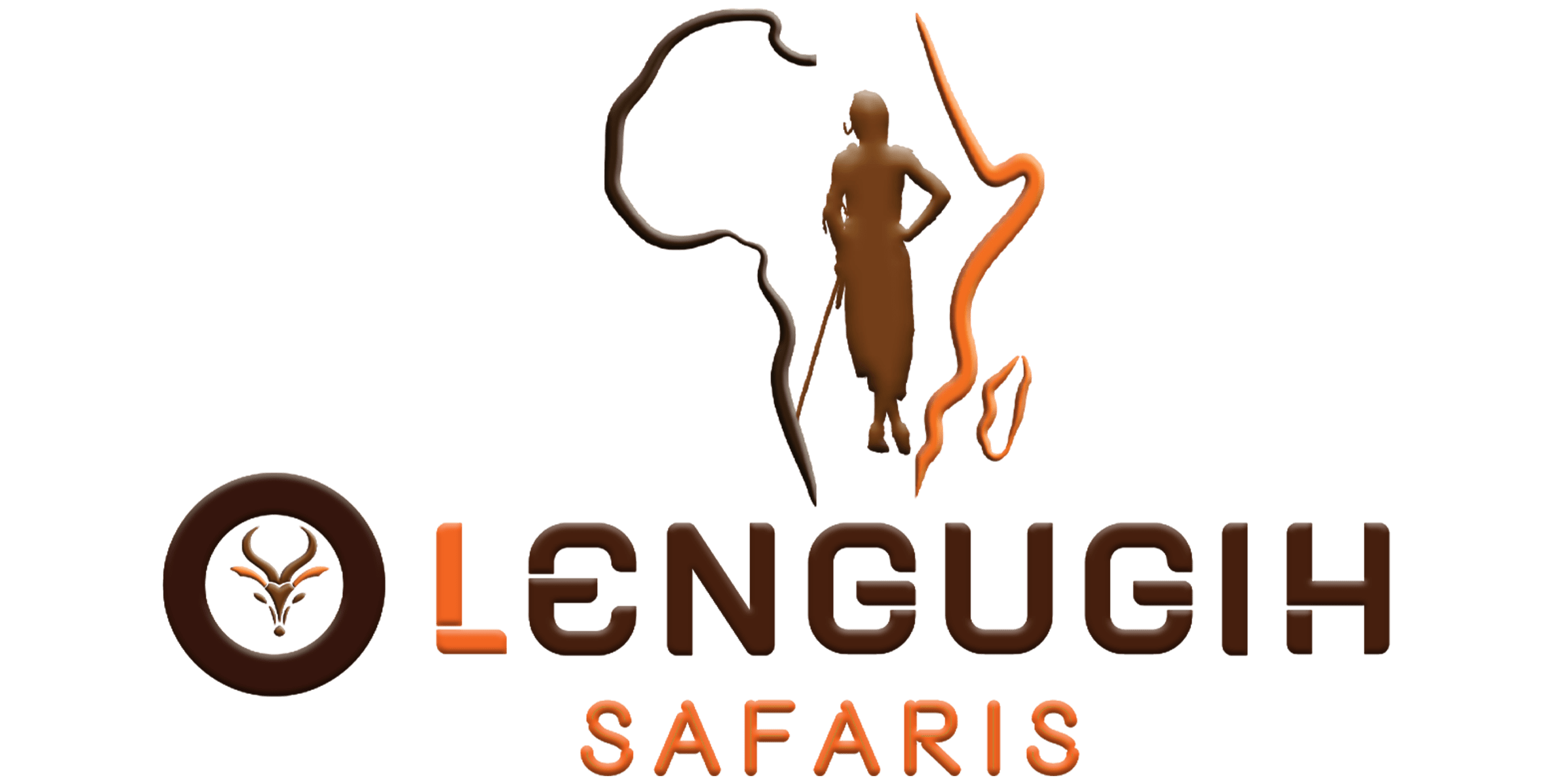The Best Time to Visit Lake Nakuru National Park: A Detailed Guide for Travelers
Tucked away in Kenya’s Great Rift Valley, Lake Nakuru National Park is a compact yet incredibly diverse wildlife sanctuary. It is world-renowned for its population of flamingos, rich birdlife, endangered rhinos, and photogenic landscapes. But to get the most out of your safari here, timing is everything.
This guide dives deep into the best time to visit Lake Nakuru, how the seasons affect wildlife and scenery, what to expect month by month, and everything you need to plan the perfect trip—from where to stay, how to get there, and what to pack.

Best Time to Visit Lake Nakuru: A Seasonal Overview
Lake Nakuru National Park is open year-round, but the best time to visit is during the dry season, from June to February.
️ Dry Season (June – February) — Ideal for Game Viewing
- Why It’s Ideal: Clear skies, dry roads, and concentrated wildlife around the lake and waterholes.
- Wildlife Viewing: Excellent. Animals are easier to spot due to sparse vegetation and limited water sources.
- Birdlife: Flamingos are usually abundant during this time, especially from August to January, depending on lake conditions.
Month-by-Month Highlights:
| Month | Weather | What to Expect |
| June – August | Cool and dry | Best for game drives, fewer mosquitoes, and good rhino sightings. |
| September – October | Warmer, still dry | Migratory birds arrive, and flamingo numbers increase. |
| November | Short rains begin | Green landscapes, some roads can be slippery. Still good for travel. |
| December – February | Hot, minimal rain | Flamingo Peak, active wildlife, and popular with tourists. |
🌧️ Wet Season (March – May) — Lush but Challenging
- Why You Might Visit: Fewer tourists, discounted rates, stunning green scenery.
- Drawbacks: Muddy roads, harder to spot animals in dense foliage, and possible flooding near the lake.
- Wildlife Viewing: Still possible, but requires a skilled guide and a 4×4 vehicle.
- Photography: Exceptional due to the dramatic sky and green backdrop.
| Month | Conditions | Travel Tips |
| March | Start of long rains | Intermittent showers. Flamingos are still present. |
| April | Wettest month | Many lodges offer low-season rates. |
| May | End of long rains | The park is quiet, and the scenery is stunning. Roads may still be slippery. |
What Wildlife Can You See?
Lake Nakuru is fenced, which makes it a safe haven for many species, especially rhinos.
Key Wildlife Highlights:
- Rhinoceroses: Home to both black and white rhinos, among the most protected in Kenya.
- Flamingos: Up to a million pink flamingos once lined the shores, though numbers now vary with water levels and algae content.
- Birds: Over 450 bird species, including pelicans, kingfishers, herons, fish eagles, and cormorants.
- Mammals: Lions, leopards, buffaloes, giraffes (especially the endangered Rothschild’s giraffe), warthogs, impalas, zebras, and waterbucks.

🗺️ How to Get There
By Road
- From Nairobi: Approx. 160 km (2.5 to 3 hours).
- Road is paved and in good condition.
- Recommended for self-drivers or private safari vehicles.
By Air
- Naishi Airstrip: Located inside the park, only accessible via chartered flights.
- Alternative: Fly to Nakuru town (via Wilson Airport, Nairobi), then drive 20–30 minutes to the park.
Where to Stay
Inside the Park (For immersive nature experiences):
- Sarova Lion Hill Game Lodge – Mid-to-high range, panoramic lake views.
- Lake Nakuru Lodge – Eco-friendly, excellent game viewing from the property.
- Flamingo Hill Tented Camp – Luxury tented experience with modern comforts.
- Lake Nakuru Sopa Lodge – Midrange hotel with a perfect view of the lake.
Outside the Park (More budget-friendly or urban access):
- Ziwa Bush Lodge – Nature-focused, just outside the park gate.
- Hotels in Nakuru Town – Suitable for travelers on a tighter budget.
Tip: Book at least 2 nights to enjoy early morning and late afternoon game drives.
What to Pack
Depending on when you visit, pack strategically for both the climate and park activities:
Essentials:
- Lightweight clothes for daytime
- Warm layers for morning and evening (it gets chilly!)
- Sturdy walking shoes or boots
- Wide-brim hat, sunglasses, and sunscreen
- Insect repellent
- Binoculars and a camera (ideally with a zoom lens)
- Waterproof jacket (especially if traveling in March–May)
- Daypack for game drives and excursions
Useful Tips for First-Time Visitors
- Park Hours: 6:00 AM to 6:00 PM daily.
- Entry Fees (2025 rates may vary):
- Non-residents: ~$60 per adult/day
- Citizens and residents: KES 300–1,000
- Check the Kenya Wildlife Service website for updated rates.
- Guides & Rangers: Hiring a KWS guide enhances your experience with animal spotting and local insights.
- Vehicle Requirements: A 4×4 is highly recommended, especially in the wet season.
- Health Precautions: Carry anti-malarial meds if traveling during the wet season. Drink bottled or treated water only.
Best Time for Photography
- Golden Hours: Early morning (6:30–8:30 AM) and late afternoon (4–6 PM) offer perfect light for landscapes and animals.
- Wet Season (April – May): Vivid green backgrounds and dramatic skies are great for landscape photography, though flamingos may be fewer.
Sustainability Tips
- Avoid single-use plastics.
- Do not disturb or feed wildlife.
- Stay on designated roads during game drives.
- Choose eco-rated lodges and camps.
- Support local conservation initiatives when possible.
You can also read this article for more tips
Lake Nakuru National Park is a jewel of the Rift Valley. Whether you want to witness the flamingo spectacle, photograph endangered rhinos, or explore Kenya’s rich birdlife, timing your visit between June and February ensures optimal conditions for wildlife viewing, comfort, and photography.
Still, if you love lush greenery and solitude, the green season (March–May) offers a different kind of magic—fewer tourists, serene landscapes, and excellent deals.
Planning Summary:
- Best Overall Months: July – October and December – February
- Great for Flamingos: August – January
- Budget Travel: April – May (wet but beautiful)
- Family Friendly: Yes – fenced park, well-managed lodges
